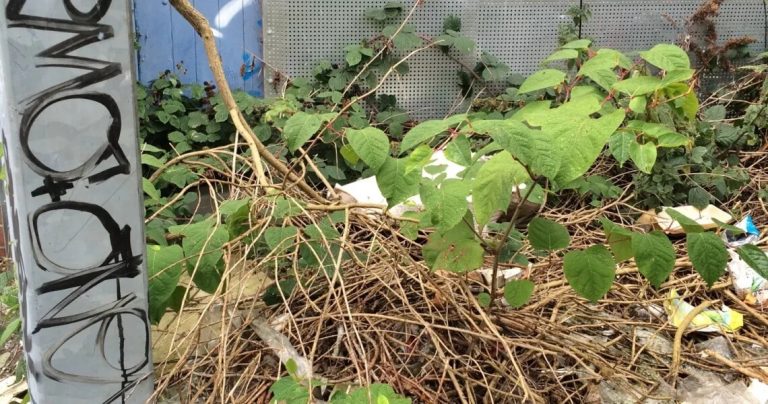
 Knotweed News
Knotweed News
Survey to Excavation (with a bit of history thrown in)
Author: Mike Clough
Date Posted: Wednesday 8th June 2016

0161 723 2000
8AM to 5PM

Author: Mike Clough
Date Posted: Wednesday 8th June 2016

Happy 1st Anniversary to me! One year on, I thought I’d recap on one of the first jobs I won with Japanese Knotweed Solutions Ltd, from survey to excavation, with a little bit of history thrown in for good measure. Those that attended our recent seminar ‘The Others’ at the MOSI last week may recognise this case study, for those that didn’t make it, imagine a very nervous surveyor on stage in front of 100+ people.
The site in question was called ‘land off Ordsall Lane’ (not much of a ring to it but I’m sure the completed development will be catchier). The site, situated on the Manchester Ship Canal in Salford, was planned for swanky new 1, 2 and 3 bedroom apartments and town houses. Being local to the area and being a curtain-twitching nosey neighbour it was of particular interest to me as I could see the development of the site from my window.
When I first surveyed the site, it was in a bit of a state, with derelict warehouses filled with rubbish, broken glass and walls covered in graffiti (plus a local homeless person, who, it turns out, lived on the site for 6 years), a true health-hazard nightmare! Surrounding these buildings was dense scrub and wall-to-wall Buddleja; a common species on derelict sites which is great for butterflies but not so great for developers. Of course, the reason I was there was the Japanese knotweed.
To make it a little challenging for me, this Japanese Knotweed stand was growing along the boundary of the site, its rhizome network extending under the adjacent footpath and close to gas, electricity and telecommunication supplies – nothing like a steep learning curve for a new surveyor!
Now, I promised you some history: my curiosity in the site was sparked by the strange purple rocks unearthed during the excavation, and, being the big geek I am, decided to delve into the past (with the help of Google) to find out more about the site. It turns out that the purple rocks were dyes and this was the site of the Ordsall Dye Works, home to J & J M Worrall who moved to Ordsall in 1792 favouring the green fields to the city. Between 1851 and 1890, the Works quickly expanded along the waterfront, with factory buildings and houses for the workers covering much of the area. In its heyday it had become one of the largest velvet dyers and printers in the world. With all this industry and no environmental regulations, this stretch of the Irwell became heavily polluted at this time, and was described in 1862 by Geologist Hugh Miller as “considerably less a river than a flood of liquid manure, in which all life dies…”
I’m pleased to say it’s not quite that gross now.
As with many new developments, space was at a premium, meaning that we could not put in practise the more environmentally friendly methodologies that look to reduce the amount of material taken to landfill. There simply wasn’t the space on site to bury the Knotweed or move it to a waste management area – leaving only one viable option: excavation to landfill. Our site operatives skilfully excavated the Japanese knotweed rhizome then installed a vertical root barrier to prevent the spread of rhizomes from under the footpath back onto the client’s site, whilst carefully avoiding those underground services! The site was left knotweed-free, ready for the next stages of development (including some very noisy ground works).
This, you might think, would make a rather neat and tidy end to the story; think again. The floods which effected much of the North West last Christmas caused the River Irwell to burst its banks in many places, including near this site. These types of flooding events destabilise river banks and wash huge amounts of debris, including the propagules of invasive species. If you are familiar with the River Irwell, you’ll know there are plenty of invasive plant species dotted along the river banks, picked up on the current and swept downstream, ready to set root elsewhere. And that’s exactly what’s happened: new areas of Himalayan balsam, giant hogweed and Japanese knotweed are now present just meters from the site.
So, perhaps this little story won’t finish here, I have a feeling we might be back in the area sooner than we think, and maybe an update will be necessary on my 2nd Year Anniversary!
Stuart Morris
Surveyor